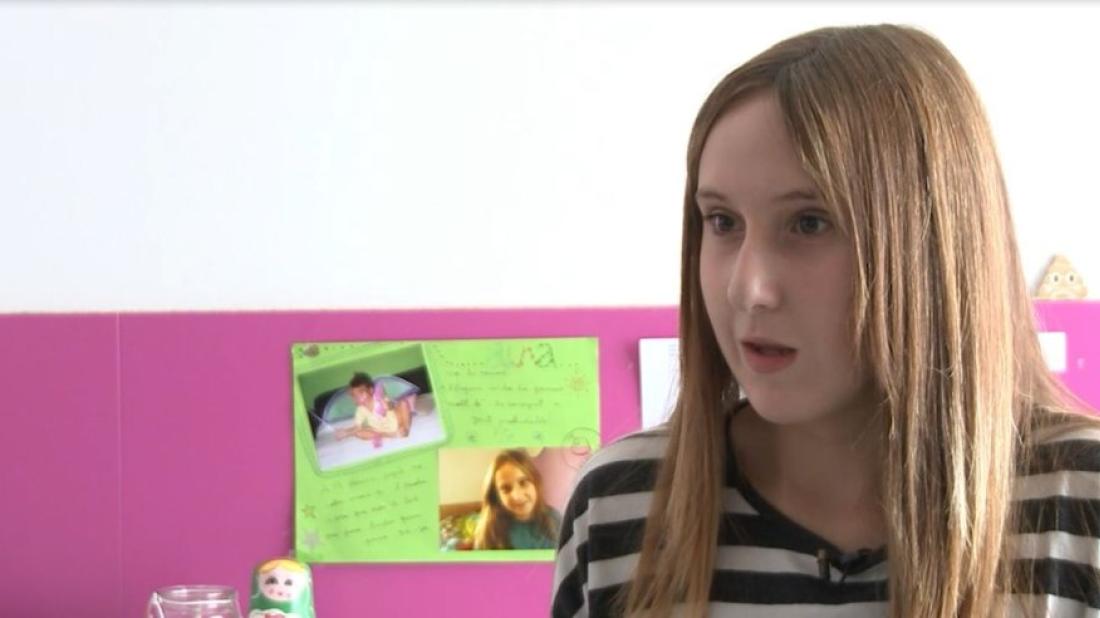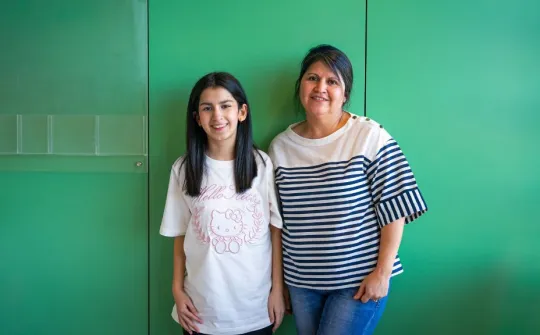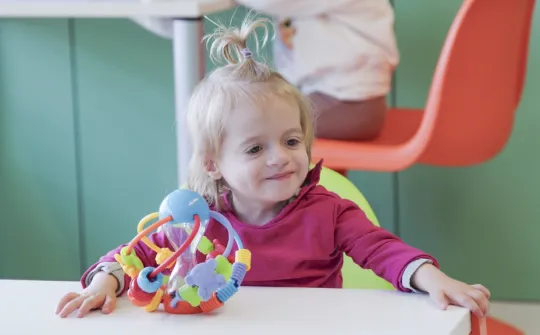
Aina’s daily life has been an obstacle course ever since she was born. Diagnosed with myoclonus-dystonia at the age of one and a half, the teenager has been treated and monitored at SJD Barcelona Children’s Hospital since she was a baby. The Movement Disorders Unit has analysed Aina’s progression during her growth.
Myoclonus-dystonia (MD) is a neuronal movement disorder characterised by short muscle contractions (myoclonus) and/or repetitive movements that result in abnormal postures (dystonia). When Aina was a little girl, she had occasional difficulties caused by the involuntary movements that worsened over time.
“The difficulties increased with growth and the myoclonus were getting increasingly stronger and more frequent, I even sometimes banged myself against things and I was dependent in almost all my daily activities”. Aina says that, despite taking the drugs prescribed, the spasms increased. Not wanting others to detect her illness, she tensed to try to minimise the spasms, and this caused numerous contractures, pain and bad postures associated with her movement disorder.
The neurologist explained to Aina’s mother that, given this situation, the myoclonus-dystonia could become incapacitating and even, in adult life, put her in a wheelchair.
That’s why when the Movement Disorders Unit proposed to Aina and her family the option of deep brain stimulation, they immediately accepted. Involuntary movements prevented Aina from walking normally, eating and drinking, washing, combing her hair or holding paper when writing. The insecurity caused by the dystonia was increasing and she didn’t even want her family to hug her for fear of hitting them involuntarily.
Deep brain stimulation is a solution to some cases of dystonia
Before the intervention, numerous diagnostic imaging tests were necessary under the supervision of the neurology team, such as magnetic resonance, as well as psychological tests and anaesthesia tests. On the day of the operation, in October 2016, a neurosurgery team implanted electrodes in the brain in order to stop the neuronal discharges that inadvertently activated Aina’s muscles.
The surgery was successful, as it had been in the few previous cases, and Aina awoke with all her cognitive functions intact without the dreaded myoclonus. This was , in the case of the teenager, the only effective treatment so far. For other patients affected by movement disorders, however, surgery and brain stimulation are not viable treatments. In these cases the research of these minority disorders, financed and promoted by the associations of families and patients, could open the door to non-invasive treatments that allow treating the smallest patients, who currently are not candidates for this type of treatment.
Neurosurgeons continue to monitor Aina, who regularly visits the Hospital to adjust the neuronal stimulation of the implanted electrodes. Her daily life now includes going to school, playing sports, going out with her friends and taking her dog Troca out for walks. Today all this has been left behind, Aina’s life is completely independent and she can even paint her nails, something most people take for granted but which she had been unable to do until now because of the illness.
Before, I couldn’t consider a future because the disease limited my autonomy. Now, I imagine living alone, studying a degree and, above all, having fun.



